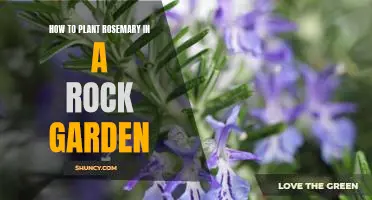Rosemary & Thyme: A Guide For Beginners

Table of Contents
Understanding Rosemary & Thyme: Key Differences and Similarities
Rosemary and thyme, while both members of the Lamiaceae (mint) family, possess distinct characteristics that make them unique and indispensable in the culinary world.
Botanical Characteristics
- Rosemary ( Rosmarinus officinalis): This woody perennial boasts needle-like, evergreen leaves and typically grows in an upright, shrub-like form. Its beautiful blue-purple flowers appear in spring and summer.
- Thyme (Thymus vulgaris): This low-growing, spreading perennial features small, oval-shaped leaves and a more delicate structure than rosemary. Its tiny, pinkish-purple flowers bloom in summer, attracting pollinators to your garden.
Flavor Profiles
The flavor profiles of rosemary and thyme are equally distinct:
- Rosemary: Offers a robust, piney, slightly bitter, and intensely aromatic flavor. Its strong taste makes it ideal for complementing rich meats and hearty dishes. Think of its classic pairings with lamb and roasted potatoes.
- Thyme: Possesses a more subtle, earthy, and slightly lemony flavor. Its delicate nature lends itself well to soups, stews, and poultry dishes, adding depth without overpowering other ingredients.
Both herbs pair wonderfully with garlic, lemon, and other Mediterranean flavors.
Culinary Uses
The culinary applications of rosemary and thyme are vast and varied:
- Rosemary: Excels in roasted meats (especially lamb and chicken), potatoes, and focaccia bread. Its strong flavor holds up well to high-heat cooking methods.
- Thyme: Shines in soups, stews, and sauces. Its delicate flavor enhances the taste of poultry, vegetables, and even eggs.
Growing Rosemary & Thyme: A Beginner's Guide
Growing your own rosemary and thyme is incredibly rewarding, providing a constant supply of fresh herbs for your cooking.
Choosing the Right Plants
When selecting rosemary and thyme plants, look for:
- Vibrant green foliage: Healthy plants will have lush, deep green leaves.
- Absence of pests or diseases: Check carefully for signs of infestation or disease before purchasing.
- Variety: Consider different varieties like creeping rosemary (ideal for ground cover) or lemon thyme (with a zesty twist).
Planting and Care
Both herbs thrive in similar conditions:
- Sunlight: Plenty of sunlight (at least 6 hours daily) is crucial for healthy growth.
- Soil: Well-drained soil is essential; avoid soggy conditions which can lead to root rot.
- Watering: Water regularly, especially during dry spells, but avoid overwatering.
- Pruning: Regular pruning encourages bushier growth and prevents the plants from becoming leggy.
- Pests and Diseases: Rosemary and thyme are generally pest-resistant but may occasionally be affected by aphids or fungal diseases.
Harvesting and Storing
- Harvesting: The best time to harvest is before flowering, when the flavor is at its peak.
- Drying: Air drying is a simple method: bundle sprigs together and hang them upside down in a cool, dry, and well-ventilated area. Oven drying at low temperatures is another option.
- Freezing: Chop the herbs and freeze them in ice cube trays with a little water or olive oil for convenient use later.
Culinary Applications of Rosemary & Thyme: Recipes and Inspiration
The possibilities are endless when it comes to using rosemary and thyme in your cooking.
Rosemary Recipes
- Roasted Chicken with Rosemary and Potatoes: A classic combination of flavors. [Link to recipe]
- Rosemary Focaccia Bread: The fragrant rosemary adds a delightful twist to this Italian bread. [Link to recipe]
Thyme Recipes
- Classic Chicken Soup with Thyme: Thyme's subtle earthiness enhances this comforting soup. [Link to recipe]
- Roasted Vegetables with Thyme: Thyme pairs beautifully with roasted root vegetables. [Link to recipe]
Combining Rosemary and Thyme
Both herbs work exceptionally well together, creating a complex and delicious flavor profile:
- Herb-roasted lamb: A perfect combination for a special occasion.
- Stuffing: Add a touch of both for a fragrant and flavorful stuffing.
- Various casseroles: Enhance the savory notes of your casserole with a blend of rosemary and thyme.
Conclusion
Rosemary and thyme offer a world of culinary and potential medicinal benefits, bringing aromatic depth and flavor to a wide array of dishes. Their versatility and ease of cultivation make them perfect additions to any kitchen garden or spice rack. Their distinct yet complementary flavors allow for endless creative culinary explorations.
Start your culinary adventure today with the fragrant power of rosemary and thyme! Explore our recipes and tips to elevate your dishes and discover the unique flavors these versatile herbs offer. Grow your own herbs or experiment with new recipes using these fragrant additions— you won't be disappointed.

Featured Posts
-
 Frais D Organisation Foire Au Jambon 2025 Une Situation Financiere Preoccupante A Bayonne
May 31, 2025
Frais D Organisation Foire Au Jambon 2025 Une Situation Financiere Preoccupante A Bayonne
May 31, 2025 -
 Strange Basement Find Baffles Plumber During House Call
May 31, 2025
Strange Basement Find Baffles Plumber During House Call
May 31, 2025 -
 Arnarulunguaq Une Pionniere Inuit Et Son Heritage
May 31, 2025
Arnarulunguaq Une Pionniere Inuit Et Son Heritage
May 31, 2025 -
 Building The Good Life Strategies For Wellbeing And Success
May 31, 2025
Building The Good Life Strategies For Wellbeing And Success
May 31, 2025 -
 Grigor Dimitrov Ochakvaniyata Za Rolan Garos 2024
May 31, 2025
Grigor Dimitrov Ochakvaniyata Za Rolan Garos 2024
May 31, 2025
